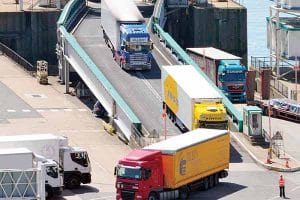The IRU report on Covid-19 impact on passenger and freight transport underlines much pain and loss of over Euro 551 billion.
Story By: Deven Lad
As the world limps back to normalcy, the impact of Covid-19 is becoming more and more clear. Severely impacting the commercial road transport industry, the virus, as per a report released by the International Road Transport Union (IRU) recently, chronicles considerable loss and pain. Closely monitoring the situation as it evolved, the IRU report has assessed the impact of the virus on passenger and freight transport companies from 78 countries across six continents. It has put the collective loss suffered by passenger and freight transport companies at Euro 551 billion. Incorporating factors like restrictions and facilitation measures, the report puts the downfall in annual turnover globally of the goods transport industry at 18 per cent.
Stating that the worst off was the passenger transport, the report underlines the loss of over Euro 80 billion in Europe. It also underlines the revenue downfall of 57 per cent. Pointing out that the transport and movement restrictions resulted in severe disruptions to supply chains and mobility networks, the IRU report draws attention to the ripple effect it caused. The overall economic slowdown it has led to. Leading to a significant slowdown in the transport industry, severely affecting the operating finances of the transport business (apart from revenue and cash flow), the effect of the economic downturn in the aftermath of Covid-19, as per the report, has resulted in the transport industry witnessing many players inching closer to bankruptcy. Highlighting the role of road transport as a driver of economic and social activity the world over, the IRU report has highlighted considerable risk from Covid-19.
Impact on global road freight transport
With the goods road transport industry recording an estimated average decline in the annual turnover by 18 per cent in the first four months of 2020, various factors like movement restrictions, health screening and border controls, and closures in multiple countries have been underlined by the IRU report. The report estimates economies of 78 countries to be the most hit. It also states that India is facing 0 to 10 per cent decline whereas China is facing a drop of over 30 per cent. Europe, the report estimates, is facing 17 per cent decline, and in Asia Pacific (APAC) region, a decline of 21 per cent. The lowest decline is being faced by North America at 12 per cent and Sub Saharan Africa at 11 per cent.
Reporting that some countries announced facilitation measures like exemptions on rules governing driving and resting times and extension of driving licenses and certificates, the IRU report also mentions that these were rendered less effective by additional controls at border crossing and insufficient implementation of ‘green lanes’, mandatory truck convoys and systematic quarantining of drivers. Working to drive the recovery in the world’s economies and communities by keeping drivers, workers and transport users safe, the IRU report states, supply chains and mobility networks are an essential part of the economy and an effort should be made to ensure their operating smoothness and to ensure that road transport operators stay in business.
Impacts on European road passenger transport
Facing a loss of up to Euro 81 billion, the road transport industry in Europe took quite a hit. As per the IRU report, causes like a ban on public transport and international movements across Europe led to a downturn of about 57 per cent. The highest impact was on the tourism sector. Data gathered from the European Union (27) and UK, where the road freight annual turnover represents one per cent of the nominal GDP, IRU found out, Belgium and Italy were the least affected at 36 per cent and 40 per cent respectively. The most affected were Bulgaria, Spain, Sweden and the UK at 92 per cent, 70 per cent, 80 per cent, and 73 per cent respectively. As per the report, the impact on passenger transport turnover segment-wise, in the bus and coach industry, is 42 per cent for urban and local, 70 per cent for intercity and 82 per cent for tourism. The taxi segment witnessed a decline of 60 per cent.
Restrictions and measures
The implementation of measures and restrictions beginning in mid‑March have been detrimental to the health of the road transport industry. Especially given the manner in which the virus has spread from China to other parts of the world. Crucial in responding to the crisis as it gathered a notorious form and function in many parts of the world, the road transport industry is now struggling to survive, states the IRU report. It mentions that restrictions on movements (goods and passengers) have had a 31 per cent effect, border restrictions have had a 26 per cent effect whereas the share of facilitation measures like driving and resting time rules, green lanes, exemptions, etc., has had a 28 per cent effect. Procedures concerning transport (quarantine, health checks, documents, etc.) have had the lowest effect at 15 per cent as per the report.
Putting the number of restrictions on movements between March 16, 2020, and March 22, 2020, to 24, when the first Covid-19 wave was visible, the IRU report states that the development led to a fair amount of disruption. The second wave between April 13 and April 19 saw the number of restrictions on movements rise to 81. Border restrictions, 47 during the first wave, rose to 69 during the second wave. Facilitation measures averaged 30 in the first wave and rose to 74 in the second wave. In contrast, procedures concerning transport, highlights the IRU report, have not seen a significant change. They amounted to 35 during the first wave. During the second wave, they amounted to 35, rising to 40 eventually.
































